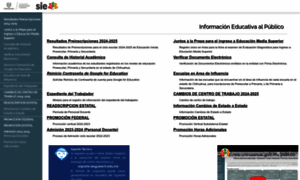
According to some of the missionaries, the Tepehuanes were warlike and polytheistic. They are distributed in rancherías between summits and ravines of the Sierra Tarahumara, in the south of Chihuahua.Īt the time of colonization, the Tepehuanes were evangelized by Franciscan and Jesuit missionaries. They live north in the Sierra Madre Occidental. Tepehuano translates as"people of the mountains". The Tepehuanes of the north or ódami, usually live in the municipality of Guadalupe and Calvo, although they are also found in smaller numbers in the municipality of Guachochi. In addition, it limits to the west with the mountainous zone of the state of Sonora, in the east with Chihuahua and to the south with the entity of Durango. The territory that is known as Sierra Tarahumara is located in the mountainous system that crosses from north to south to the Sierra Madre Occidental in the state of Chihuahua. Its language is part of the Aztec yuto family, the same that expands from the state of Utah and goes to Central America. The Tarahumara Indians call themselves"rarámuris", which means"runners on foot". Guarijío or guarijó means"people", also translated as"the people who speak the guarijía". They lived there since before the arrival of the Spaniards.Īs for the language, this community speaks variants belonging to the yuto Nahua language family. The Guarijíos continue to inhabit in their original territory, that is to say, in the surroundings of the border that delimits to Sonora and Chihuahua. The rest speak some language from the Mixtec languages. Finally, the Nahuatl with 1.2%, which equals 1,286. Then there is Tepehuán with 7.3%, approximately 8,396 Indians. The locations of these ethnic groups are located in territories that are difficult to access.Īs for the language, the predominant in the entity is the Tarahumara with 84.2%, or 85,316 people. Of these, 86% have less than 50 inhabitants, which are divided into four groups. In the state of Chihuahua there are 6,998 registered indigenous communities.

Den regnigaste månaden är juli, med i genomsnitt 127 mm nederbörd, och den torraste är februari, med 4 mm nederbörd. Genomsnittlig årsnederbörd är 439 millimeter. Den varmaste månaden är juni, då medeltemperaturen är 34 ☌, och den kallaste är januari, med 13 ☌. Omgivningarna runt Ciudad Camargo är i huvudsak ett öppet busklandskap. Ciudad Camargo är det största samhället i trakten. Runt Ciudad Camargo är det mycket glesbefolkat, med 3 invånare per kvadratkilometer.

Den högsta punkten i närheten är 1 959 meter över havet, 8,3 km nordväst om Ciudad Camargo. Terrängen runt Ciudad Camargo är platt åt sydost, men åt nordväst är den kuperad. Ciudad Camargo ligger 1 240 meter över havet och antalet invånare är 37 743. Den ligger i kommunen Camargo och delstaten Chihuahua, i den nordvästra delen av landet, 1 100 km nordväst om huvudstaden Mexico City. Fundada em 25 de novembro de 1797, tem 40221 habitantes consoante índices de 2010. Santa Rosalía de Camargo, ou simplesmente Camargo, é uma cidade do estado de Chihuahua, localizado no México.Camargo is de geboorteplaats van de schilder David Alfaro Siqueiros en de politicus Luis H. De belangrijkste bron van inkomsten is de veeteelt. De plaats heeft ongeveer 40.000 inwoners (schatting 2007) en is de hoofdplaats van de gemeente. Santa Rosalía de Camargo is een stad in de Mexicaanse deelstaat Chihuahua.Es conocida también por los nombres de Camargo o en ocasiones Ciudad Camargo, recibiéndolos en honor de Ignacio Camargo, insurgente que participó en la Independencia de México. Santa Rosalía de Camargo es una ciudad del estado mexicano de Chihuahua, situada en la zona centro-sur del mismo, es cabecera del municipio de Camargo y centro económico de una importante región agrícola y ganadera.Ciudad Camargo was originally founded in 1740 and refounded in 1792.

It serves as the municipal seat of Camargo municipality and also serves as an important agricultural and livestock center for the area. Santa Rosalía de Camargo, originally called Santa Rosalía, and now known as "Ciudad Camargo" (Camargo City), is a city in the eastern part of the Mexican state of Chihuahua, located at the confluence of the Rio Parral and the Rio Conchos in the Allende Valley.


 0 kommentar(er)
0 kommentar(er)
